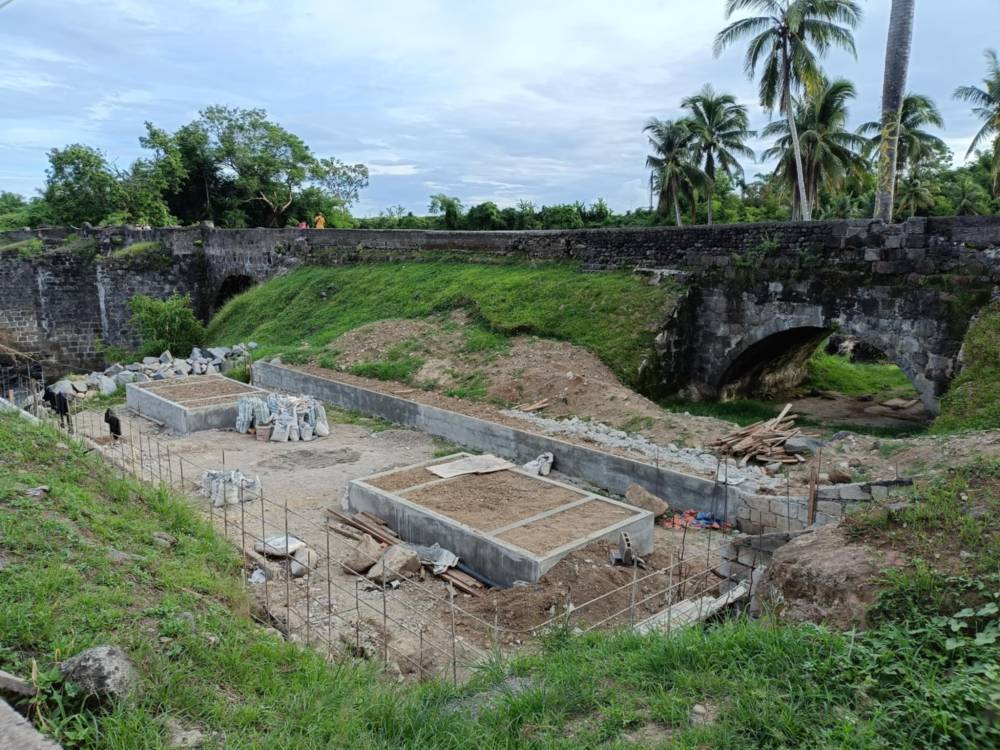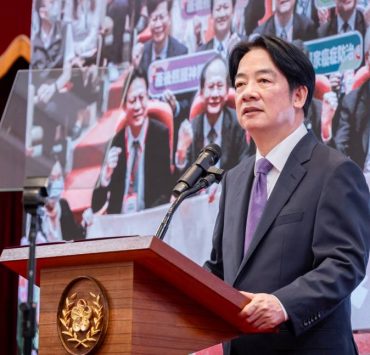Work near Spanish-era bridge in Quezon watched closely

LUCENA CITY—The ongoing rehabilitation and site development around the centuries-old Malagonlong Bridge, also known as Puente de Malagonlong, in Tayabas City in Quezon province, has stirred controversy after a local heritage protection advocate raised questions on the ongoing work in a social media post.
On Thursday, Mayor Lovely Reynoso-Pontioso had to clarify on Facebook that the project had been allowed by the National Commission for Culture and the Arts (NCCA) and attached on her post copies of the NCCA permission, plan and perspective images of the structure to be built on the Malagonlong Bridge area.
The letter from Oscar Casaysay, NCCA executive director, commended the city government for initiating projects for the development and promotion of a cultural heritage.
“As your recent revised plans is in consonance with the conditions set forth by the principals of the national cultural agencies through the NCCA Inter-Agency Task Force Cultural Heritage, we hereby give our permission to your proposed development,” Casaysay said in the letter that accompanied the mayor’s social media post.
However, Casaysay emphasized, “that any deviation from the submitted revised plans would trigger the revocation of our permission.”
He also requested the local government for periodic updates on the project, which was started last month.
Cultural treasure
The ongoing project only became widely known after Vladimir Nieto, a heritage protection advocate in the province, posted on Facebook some photos of work being done near the bridge on June 30. The post had already been deleted.
“Let me clarify one thing, it is natural for heritage advocates like me to ask what is going on. There is no billboard showing the perspective of the ongoing project. Second, I did not see any online material about it. So, it came to me as a big surprise when I saw it,” Nieto explained in an online interview on Thursday.
He added: “After that, the city government of Tayabas issued a statement and showed the permit from the NCCA. It turns out there was, it just wasn’t made public. Good to know this. I rest my contention.”
The Malagonlong Bridge has been declared a national cultural treasure (NCT) through Museum Declaration No. 7-2011, noted Casaysay.
As such, “Section 48 of the same act prohibits the demolition, modification or alteration of NCTs, thus, public or private entities must seek written permission first from this Commission for developments or activities which may directly and indirectly affect such cultural property,” Casaysay explained.
Reynoso-Pontioso said the NCCA permission for the project “clarifies any speculations and questions regarding the current construction of the structure in the area.”
Until the development in the area was raised by Nieto, the local government or any of its officials had no public disclosure of the project on their social media pages since it was granted permission by the NCCA in November.
Based on the proposed plan and perspective images, a promenade area, that will have lighted walkways and concrete benches surrounded by trees, will be established in the areas surrounding the bridge, which will remain untouched.
“The City of Tayabas will continue to care for the important heritage sites, especially the declared National Cultural Treasures that can only be found here,” Reynoso-Pontioso declared.
“I hope that the project adds value to Malagonlong Bridge so that it will be more appreciated by the public, not just the people of Tayabas. It is a cultural treasure that should be cared for and valued,” Nieto said.
Grandest
Kevin Pabulayan, one of the founders of the Puente de Malagonlong protection group called “Oplan Sagip Tulay,” said their group fully supports the Malagonlong site development project “as long as it adheres to the guidelines and proposal plan set by the NCCA and is approved by the agency.”
“Highlighting the Puente de Malagonlong will not only attract tourists but also raise awareness and appreciation for our heritage,” Pabulayan said in a statement.
Malagonlong is considered the grandest of the 10 Spanish arch bridges in Tayabas. It was no longer used by travelers after a new concrete bridge was built adjacent to it in 2004, but most of the bridges still serve motorists, linking Tayabas to the towns of Sariaya, Lucban and Pagbilao.
The 136-meter-long (445 feet) stone arch bridge, which spans the Dumacaa River between Barangay Mateuna and Barangay Lakawan, was built from 1841 to 1850 using adobe blocks, limestone, molasses and eggs for binders, the way it was done during the Spanish period.
It was also declared a “marked historical structure” by the National Historical Commission of the Philippines in August 2011.

















